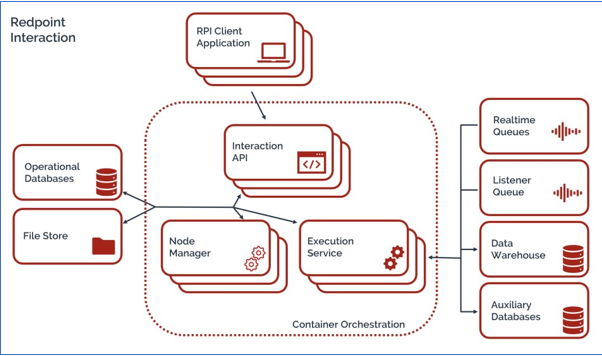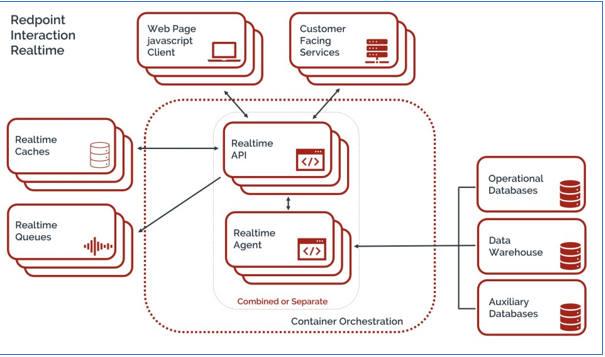Admin: Introduction
Overview
The Redpoint Interaction (RPI) System Administration Guide provides installation, configuration, and maintenance instructions for IT professionals responsible for implementing the RPI system.
What is Redpoint Interaction?
RPI is a key component of Redpoint Global’s fully integrated solution, which delivers a single point of control to connect customer data and execute marketing campaigns, so customers can achieve the real-time, hyper-personalized experiences they demand.
RPI allows marketers to orchestrate and execute complex multitouch, multichannel journeys or simple one-off campaigns that are designed to engage with customers and prospects across all possible touchpoints.
Dynamic rules and content enable marketers to keep up with each customer’s cadence as preferences, interests, and needs evolve.
For more information, please visit Redpoint’swebsite.
Architecture diagrams
An RPI implementation can be represented as follows:

An RPI Realtime implementation can be represented as follows:

Each of the elements in the architecture diagrams is discussed separately in the topics that follow.
